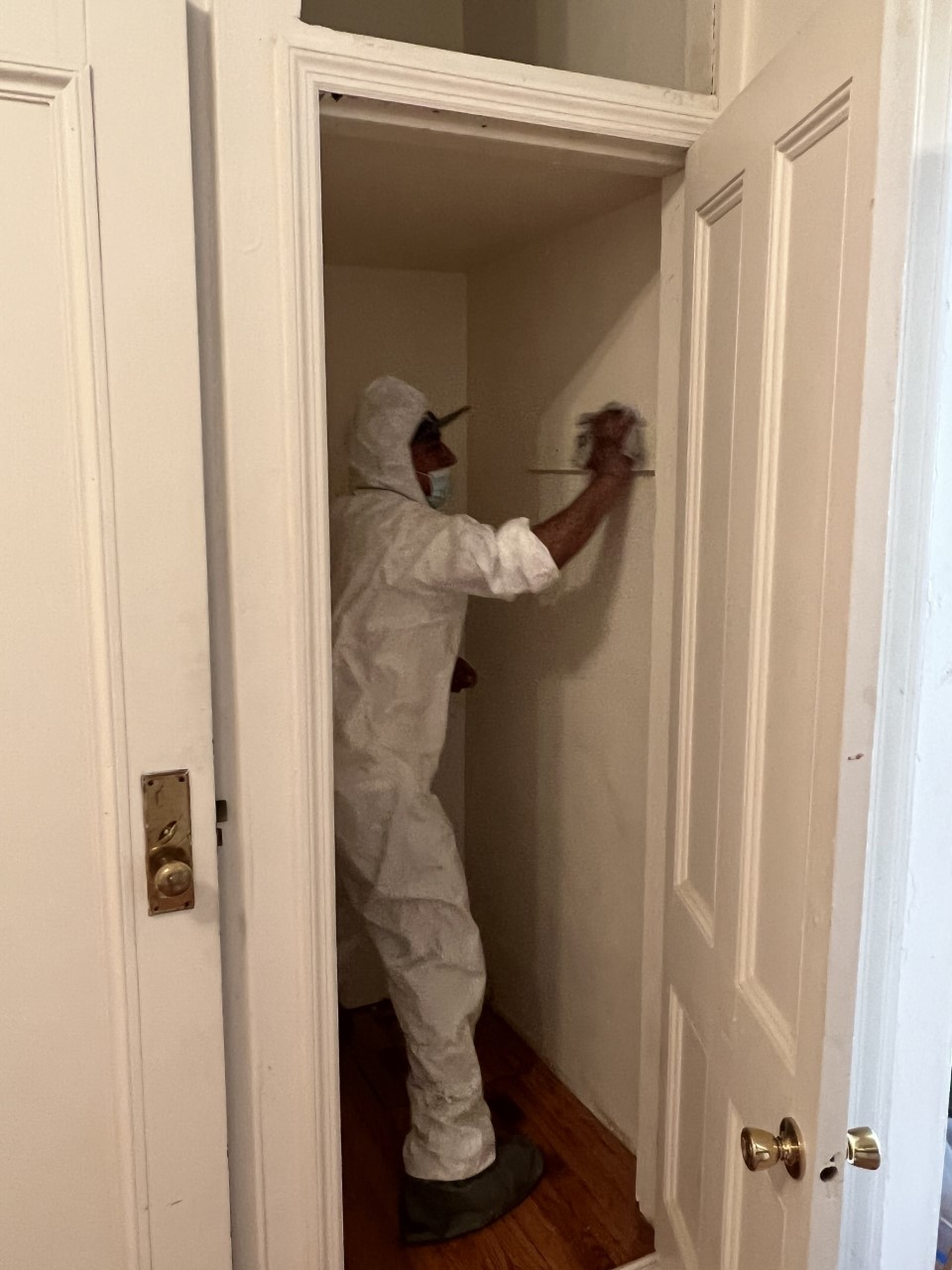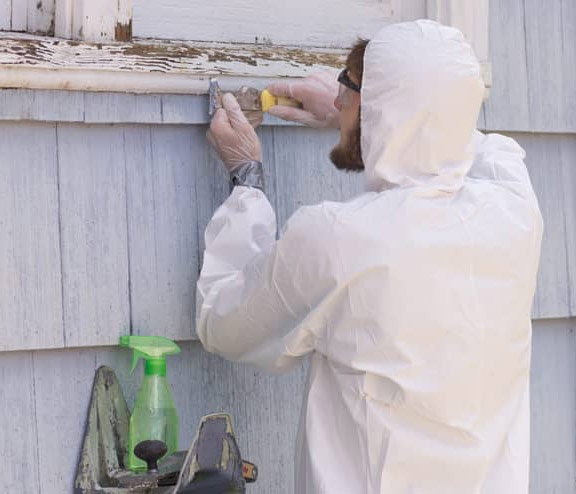Essential Devices and Approaches for Reliable Lead Offense Clean-up
Attending to lead violations successfully demands an extensive strategy that blends the right devices with tactical techniques. Concurrently, the use of specialized cleaning devices, such as HEPA vacuums and lead-specific cleaning agents, is imperative for extensive impurity removal. Effective control approaches, consisting of plastic bed linen and negative air pressure systems, are necessary to prevent the spread of dangerous materials.
Individual Safety Equipment
Personal protective devices (PPE) is a critical component in the efficient management of lead contamination clean-up. PPE offers as an essential obstacle, safeguarding workers from the dangerous effects of lead exposure, which can lead to serious health and wellness effects. The crucial PPE for lead cleaning consists of respirators, safety apparel, handwear covers, and eye defense. Each kind of tools is especially made to minimize different dangers related to lead bits and dust.
Respirators, particularly those geared up with HEPA filters, are vital for filtering air-borne lead bits, preventing breathing. Protective garments, consisting of coveralls and disposable fits, prevents lead dirt from adhering to workers' garments, reducing the risk of second contamination.
Additionally, rigorous training on the right use and maintenance of PPE is essential. Workers need to be educated on putting on and doffing treatments to avoid contamination. Normal inspections and substitutes of PPE parts are required to keep their protective abilities, ensuring a risk-free and certified cleaning operation.
Specialized Clean-up Equipment

An additional essential tool is the wet/dry vacuum cleaner, which can effectively clean up both dirt and liquid impurities. These vacuums typically feature HEPA filters to provide an extra layer of security. Damp wipes or tack towels are also important for surface area cleansing; they are especially designed to catch and hold lead particles, decreasing the danger of spreading out contamination.
For even more persistent down payments, specialized lead-removal cleaner are required. These representatives are developed to damage down lead fragments, making them less complicated to remove. Scrub brushes with sturdy bristles can aid in this procedure, especially on rough surfaces where lead dust tends to adhere more strongly.
Additionally, encapsulants are made use of to secure lead-contaminated surface areas, protecting against the launch of lead dirt. These specialized paints and layers are made to comply with various substrates, offering a long-term service for lead containment.
Effective Control Approaches
Reliable containment techniques are critical in minimizing the spread of lead contamination throughout cleanup tasks. Implementing robust containment techniques makes certain that lead particles do not move to unaffected locations, thereby securing both workers and the environment (DOH & HPD Lead Violation Removal NYC).

To improve control, encapsulants can be applied to surfaces that are not being eliminated or disrupted. These specialized finishes bind lead dust, reducing its schedule for resuspension. In addition, all personnel need to use ideal Individual Safety Tools (PPE), including respirators and non reusable suits, to avoid contamination spread.
Safe Disposal Practices
Ensuring risk-free disposal techniques is an essential part in the monitoring of lead contamination clean-up. Proper disposal minimizes the danger of lead coming back the setting and threatening public health and wellness. The primary step is to identify and set apart lead-contaminated waste from various other products. Protected control making use of sturdy, watertight containers is vital to protect against spillage during transportation.
Moving lead waste calls for adherence to strict standards. Utilizing licensed contaminated materials carriers ensures that the products are managed sensibly. Documents, including materializes describing the kind and quantity of waste, ought to come with shipments to track the waste from the website of origin to its final disposal location.
Designated contaminated materials disposal centers are furnished to deal with lead-contaminated materials safely. These facilities commonly use innovative approaches such as stabilization, solidification, additional reading or chemical treatment to reduce the effects of the lead before disposal. Landfilling in specialized, lined areas that prevent leachate from infecting groundwater is an usual practice for final disposal.
Routine training for personnel associated with lead garbage disposal is essential to maintain safety standards and avoid unintentional direct exposure. By adhering to these methods, organizations can dramatically lower the ecological and wellness impacts connected with lead contamination.
Regulatory Compliance Tips

Sticking to governing conformity is extremely important in the successful implementation of lead contamination clean-up. Comprehending and adhering to federal, state, and neighborhood guidelines guarantees not just the security and health and wellness of people however also the legal and financial well-being of the cleanup company. The Environmental Defense Company (EPA) sets rigorous requirements, such as the Lead Remodelling, Fixing, and Paint (RRP) Rule, which mandates proper certification and training for professionals handling lead-based my website tasks.
Conformity starts with an extensive evaluation of suitable regulations and regulations. Organizations should remain upgraded on any kind of legal changes, which can be helped with via regular training sessions and signing up for market updates. Paperwork is an additional essential compliance aspect; maintaining detailed records of all activities, including evaluation reports, worker training logs, and disposal materializes, is vital.
Additionally, engaging with accredited lead examiners or run the risk of assessors makes sure that lead dangers are properly determined and reduced. Employers have to apply using Individual Safety Devices (PPE) and guarantee that safety protocols are purely complied with. Transparent communication with stakeholders, consisting of workers, clients, and governing bodies, will foster a society of conformity best site and accountability, ultimately contributing to a more secure and a lot more effective lead clean-up process.
Verdict
Reliable lead violation cleaning requires the integration of specialized devices and tactical methodologies to ensure safety and security and effectiveness. Making use of HEPA vacuums, specialized cleaning agents, and reliable containment approaches such as plastic bed linen and adverse air pressure systems is important. Individual protective tools (PPE) safeguards workers from exposure, while safe disposal practices and stringent adherence to governing conformity are essential for properly managing dangerous waste. Jointly, these steps dramatically mitigate health and wellness risks and add to a cleaner environment.